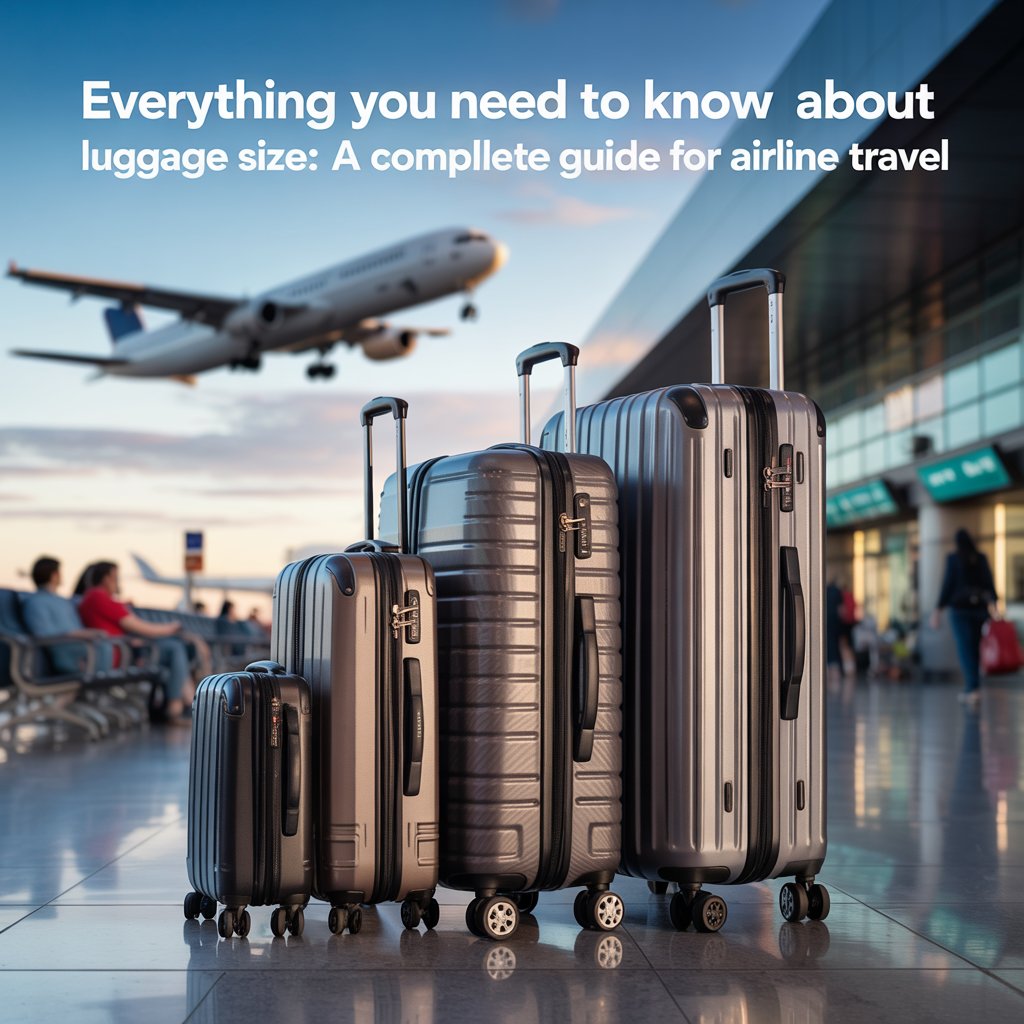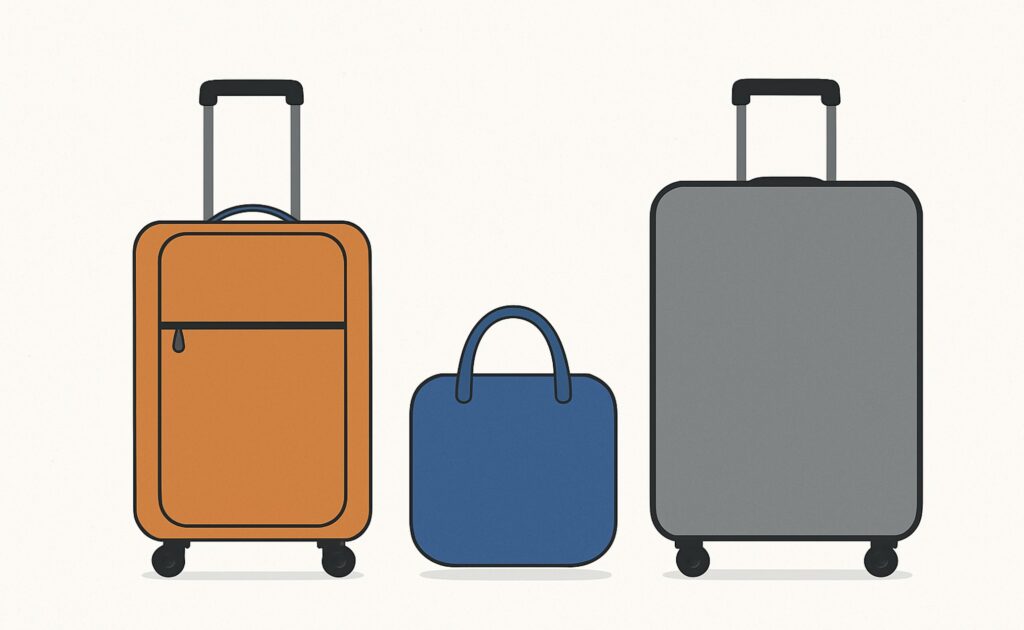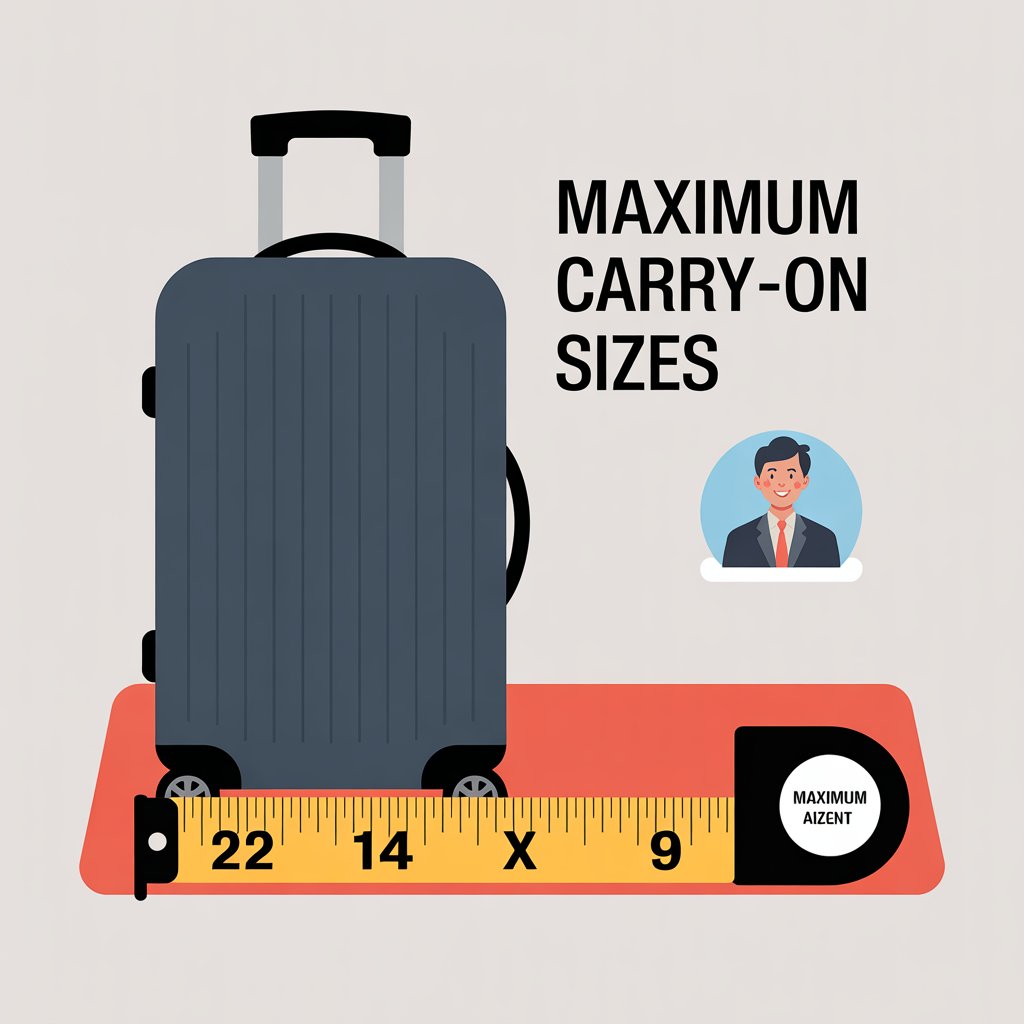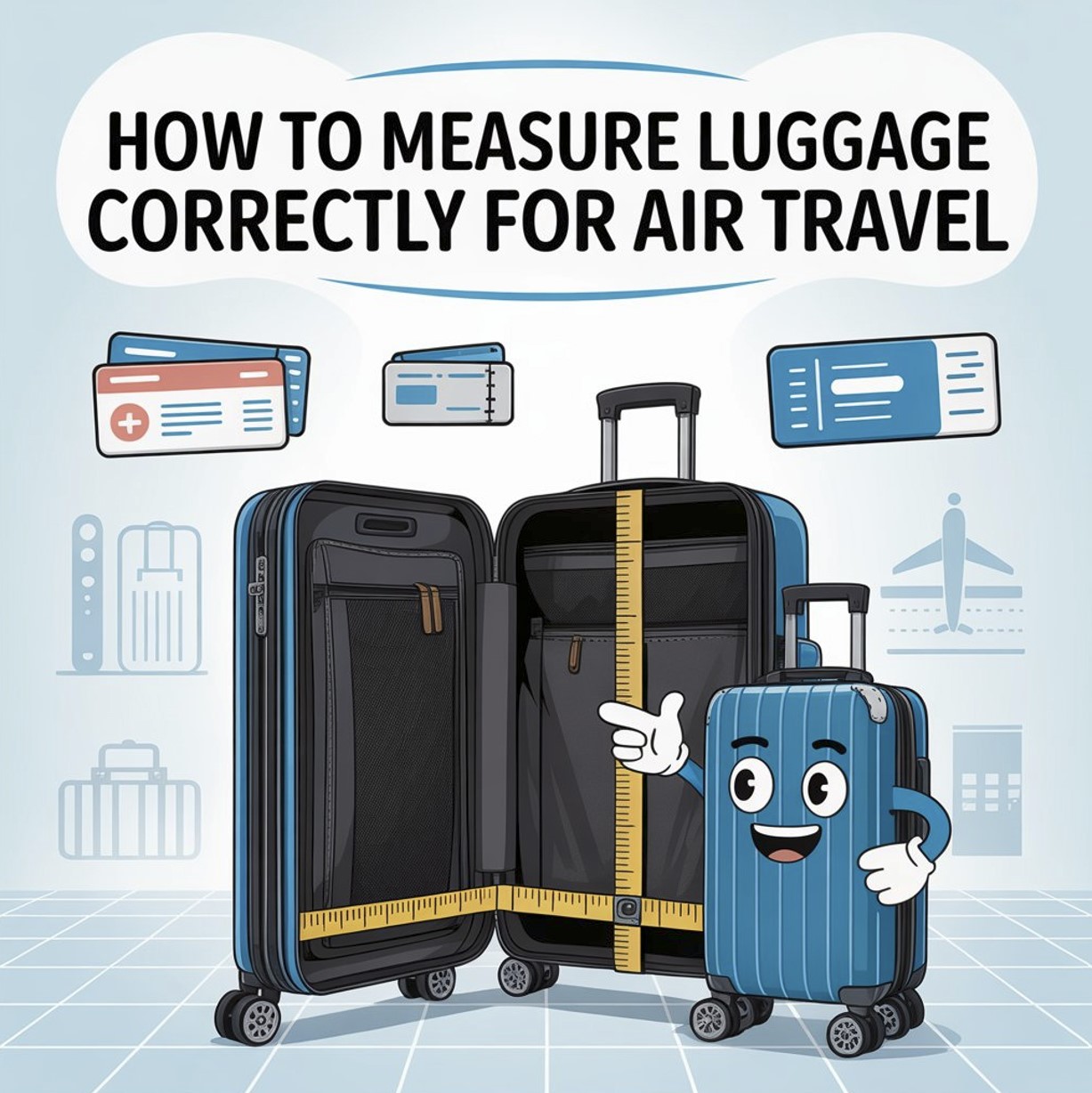Call us: (888) 784-8571
Traveling can be exciting, but the hassle of choosing the right luggage, especially with different airline policies, can be frustrating. This guide breaks down luggage size rules and shows you how to accurately measure luggage so it complies with check-in and carry-on requirements. Whether you’re flying domestically or with international airlines, this article provides everything you need to avoid surprises, baggage fees, or having your suitcase sent to the cargo hold unexpectedly. Let’s simplify your travel with the ultimate luggage size guide.

Article Outline
- What Size Luggage Is Allowed on Most Airlines?
- How Do You Measure Luggage the Right Way?
- What Is the Standard Carry-On Size for Airlines?
- What Counts as a Personal Item?
- What Is the Size Limit for Checked Bags?
- Domestic vs International Luggage Rules
- How to Choose the Right Suitcase for Your Trip
- How to Avoid Baggage Fees When You Travel
- Top Tips to Make Sure Your Luggage Fits
- Frequently Asked Questions About Airline Luggage Size
What Size Luggage Is Allowed on Most Airlines?
Most airlines have specific luggage size requirements depending on whether you’re carrying on your bag or checking it in. For carry-on luggage, the most commonly accepted maximum dimensions are 22 x 14 x 9 inches, which includes wheels and handles. Checked bags usually must not exceed 62 linear inches (length + width + height) and a weight limit of 50 pounds (or 23 kg).

Many airlines have similar policies, but size restrictions and allowance can vary depending on the carrier and destination. That’s why it’s essential to check your airline’s website before flying. Staying within the standard size requirements will help you avoid delays and additional fees at the airport.
How Do You Measure Luggage the Right Way?
To avoid surprises, it’s critical to measure your bag accurately. You should use a measuring tape and start at one edge of the bag. Be sure to measure from the back of the suitcase to the front of the suitcase, including handles and wheels.
First, measure the width (side to side at the widest point), then measure across the front, and finally, determine the length from the bottom of the wheels to the top. Add up these three measurements to calculate the total linear inches. If the total is over 62 inches for checked baggage, your luggage may be considered oversized.
What Is the Standard Carry-On Size for Airlines?
The standard size for a carry-on bag is generally 22 x 14 x 9 inches, which is designed to fit within the overhead bin. This rule is especially important when flying with international airlines, which sometimes enforce carry-on size rules more strictly.
Your carry-on should also stay within the weight limit for carry-on set by the airline, which can range between 7–10 kg (15–22 pounds). Always measure your carry-on luggage before heading to the airport to prevent needing to check-in your bag last minute.

What Counts as a Personal Item?
A personal item is usually a small bag that must fit under the seat in front of you. Acceptable items include backpacks, purses, laptop bags, or small totes. Most airlines allow a personal item in addition to your carry-on.
The typical size for a personal item is around 18 x 14 x 8 inches or x 36 x 23 cm, though this may vary. If your personal item is too large, the airline may ask you to place it in the overhead compartment or even check it in.
What Is the Size Limit for Checked Bags?
For checked luggage, the general size limit is 62 linear inches. Anything beyond that is considered oversized and may incur additional fees. The standard weight limit is 50 pounds or 23 kg per checked bag.
This applies whether you’re traveling with domestic and international airlines. To avoid issues, measure luggage carefully and weigh it before leaving for the airport. Consider the type of luggage you use – duffle bags may offer more flexibility in fitting within size rules than hard-sided suitcases.
Domestic vs International Luggage Rules
Domestic and international flights often have different baggage policies. For example, international airlines may offer a higher baggage allowance, but their rules for carry-ons and personal items can be stricter.
On domestic flights, especially within the U.S., airlines tend to allow one carry-on and one personal item, but low-cost carriers may charge extra even for these. Check your flight operators website to confirm size requirements and baggage rules in advance.
How to Choose the Right Suitcase for Your Trip
When choosing the right luggage, consider both your travel style and the airline size restrictions. A medium and large suitcase is great for longer trips, while a carry-on is best for weekend getaways.
Luggage comes in all shapes and sizes, so pick one that suits your packing habits and trip duration. Hard-shell suitcases are more protective but can weigh more. Soft-sided luggage may allow a little stretch to squeeze into tight compartments.
How to Avoid Baggage Fees When You Travel
No one likes paying extra baggage fees. To avoid them, make sure your carry-on and checked luggage meet your air operator guidelines. Weigh your luggage at home, and be sure to measure luggage properly – include wheels and handles.
Another great tip is to pack smarter. Use compression bags to reduce volume and limit the number of suitcases you bring. If you’re unsure about your bag’s size or weight, double-check it before getting to the airport.

Top Tips to Make Sure Your Luggage Fits
Here are a few essential strategies to make sure your luggage fits within your airline’s size rules:
- Always measure your suitcase before flying.
- Use the bottom of the wheels as your measuring starting point.
- Include handles, pockets, and wheels in your total dimensions.
- Ensure your carry-on can fit under the seat or in the overhead bin.
- If unsure, test your carry-on in the flight operators sizing bin at the airport.
These small steps can help you avoid baggage issues and travel more efficiently.
Frequently Asked Questions About Airline Luggage Size
Q: Can I bring both a carry-on and a personal item?
A: Most airlines allow this, but it’s crucial to check each airline’s website as policies vary depending on whether the flight is domestic or international.
Q: What if my bag is slightly over the size limit?
A: If your luggage exceeds the size limit by even an inch, the airline may ask you to check it in, often with an extra fee.
Q: What are linear inches?
A: Linear inches refer to the total sum of a bag’s length, width, and height. For example, a checked baggage limit of 62 linear inches could be met with a bag that is 28 x 21 x 13 inches.
Q: What happens if I bring oversized luggage?
A: You’ll likely be charged an oversized baggage fee, and your luggage may need to go into the cargo hold.
Q: How do I measure my duffle bag for check-in luggage?
A: To measure your duffle bag for check-in luggage, ensure it fits within the airline’s size restrictions. Typically, the dimensions should not exceed 56 x 36 x 23 cm. Use a measuring tape to get accurate measurements from the back to the front of the bag.
Q: What detailed information do I need to check for hassle-free travel with my luggage?
A: For hassle-free travel, check the weight and size limits of your airline for both sack and check-in luggage. Make sure your bags are within the dimensions and weight allowances to avoid extra fees. Always measure your luggage and pack efficiently.
Q: What should travellers consider when packing a duffle bag?
A: Travellers should consider the dimensions of their sack, ensuring it aligns with the check-in luggage requirements. Packing strategically, with heavier items at the bottom and lighter items on top, can help optimize space and maintain the 56 x 36 x 23 sizing guidelines.
